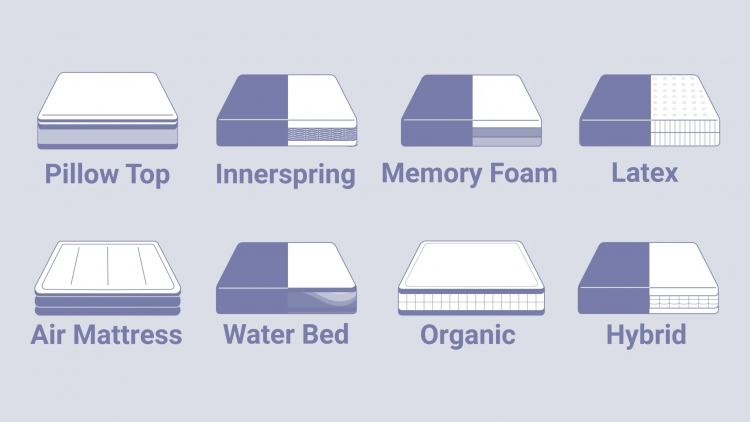Getting a good night’s sleep can have a lot to do with the position that you sleep in and the type of mattress you have. Some mattresses aren’t actually compatible with every position, so while you may have found it comfy to sit on, it could be detrimental to your sleep quality. Having the right mattress is essential to your bodily comfort as well, so if you wake up with an achy back in the morning, it could be down to your mattress, not how you sleep. If you want to find out the best mattress for your sleeping position, keep reading and find out…
Side Sleepers
Sleeping on your side is a common position that a lot of people tend to like as it can provide you ultimate comfort and it can alleviate pressure from your back. However, if you have the wrong mattress, it could actually be doing you more harm than good. The assumption that a mattress needs to be firm to work isn’t 100% correct, as side sleepers need something softer in order for their body to be cushioned. Memory foam mattresses are one of the best options for side sleepers as they mould to the contours of your body, allowing your curves to naturally sink into the mattress while still being supported. A mattress that’s too firm won’t do this, causing pressure to be forced onto your shoulders, hips, and knees. So, if you love to sleep on your side every night, memory foam can be just the thing for you.
Foetal Position
Some people like to sleep on their side but prefer to curl their body up into a foetal position. This position can actually help stretch your back muscles and alleviate pain, so not only is it comfy, but you could be helping yourself out too. It’s also been said that it can reduce snoring as well! However, much like your typical side sleeper, you’ll need a softer mattress to ensure your body is properly supported and you’re not over-extending your neck. Memory foam can be perfect for foetal positions, as again, it moves with your body, giving you the ideal cushiony support you need.
Front Sleepers
Sleeping on your front is supposed to help with snoring, but it’s actually not a recommended sleeping position as it can put a lot of pressure on your back and neck. However, if you genuinely can’t fall asleep unless you’re lead on your stomach, then you want to make sure you have the best mattress for this position. Front sleepers need a firmer mattress to ensure that their neck and back are fully supported. Mattresses like latex can be best for this position as memory foam, or one that’s too soft can cause the stomach and pelvic area to sink too low. This then puts immense pressure on the spine and neck, causing you to wake up feeling achier than ever. Try opting for something on the firmer end of the scale, and you’ll definitely feel the benefits.
Back Sleepers
People who love to sleep flat out on their backs also need a similar mattress to front sleepers. This is because you need to protect your knees, hips, and spine. Having a fully supportive, firm mattress is ideal as it keeps your spine aligned and stops any pressure being applied to your joints. If you don’t have the right mattress while sleeping on your back, you may be more prone to snoring and it can cause problems for those with sleep apnoea. But if you have a firm enough mattress that keeps your body in the correct alignment, you may find that your snoring subsides.
Having the right mattress for your sleeping position is crucial if you want to improve your quality of sleep. Continuously sleeping on the wrong mattress for your chosen position can cause lots of problems for your back and other joints. However, these can be avoided simply by changing up your mattress. So, if you’re finding that you can’t get comfy at night in your usual position, it could be your mattress that needs updating, not how you sleep. Try incorporating these top tips when choosing your mattress and you’ll soon find your bed comfier than ever no matter what position you sleep in.




